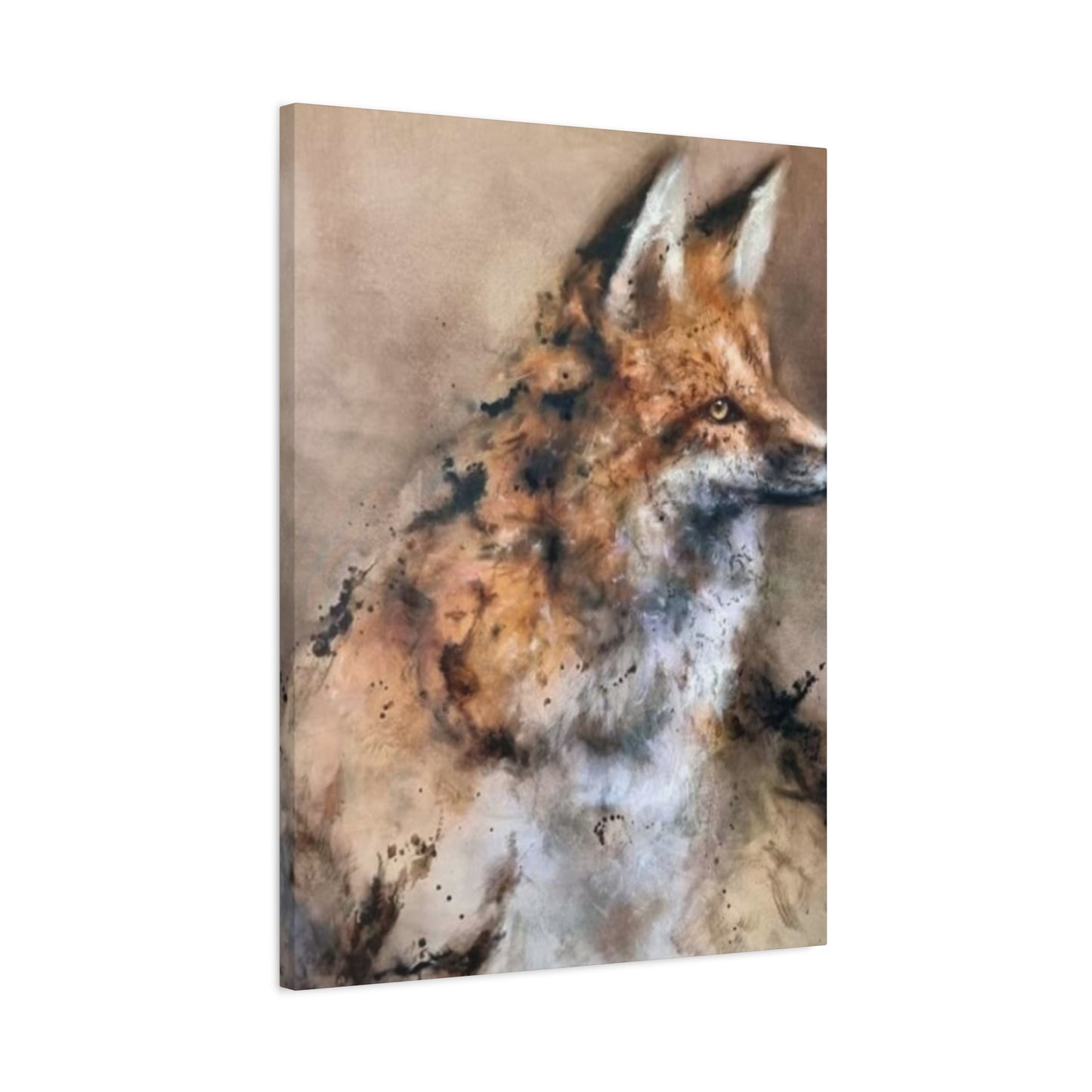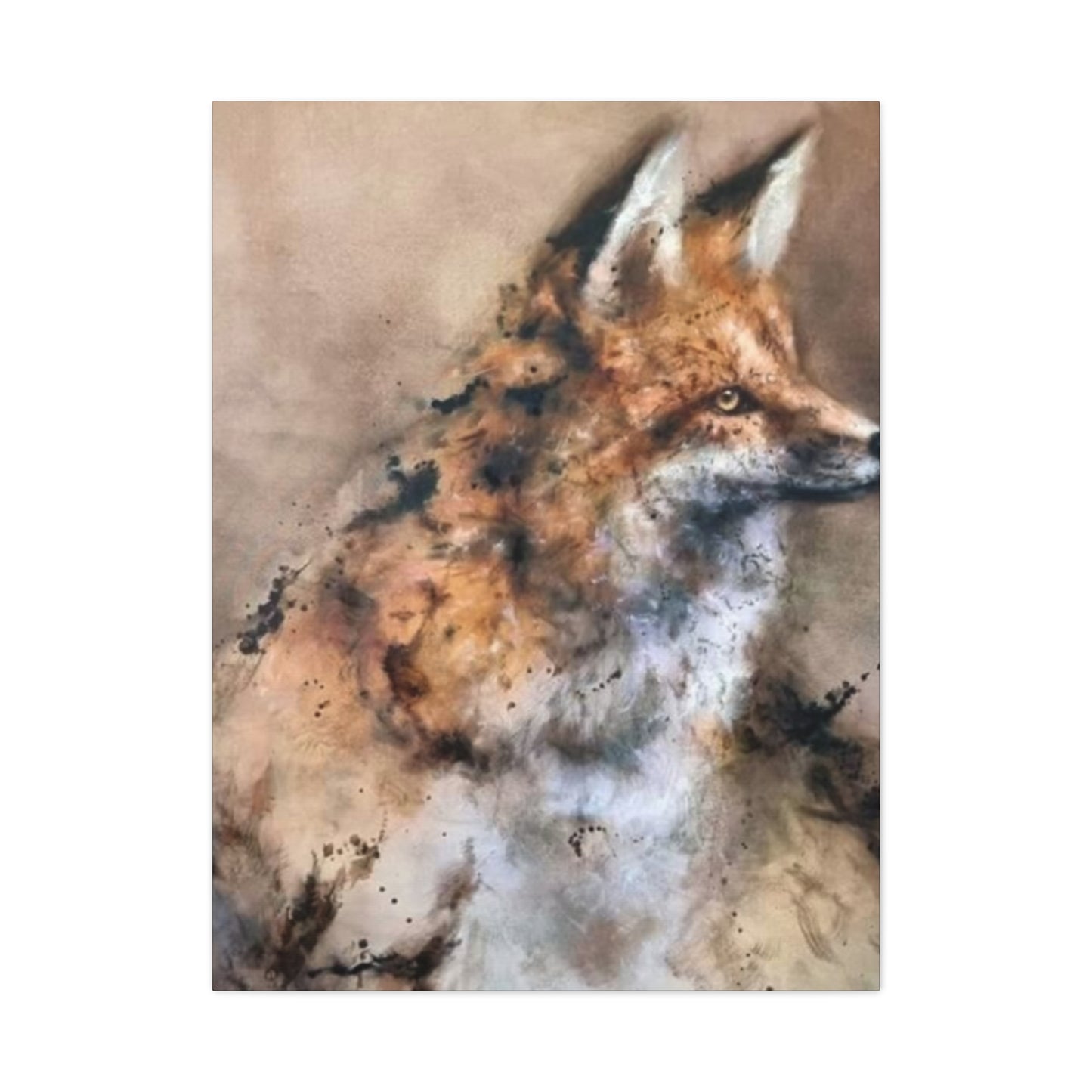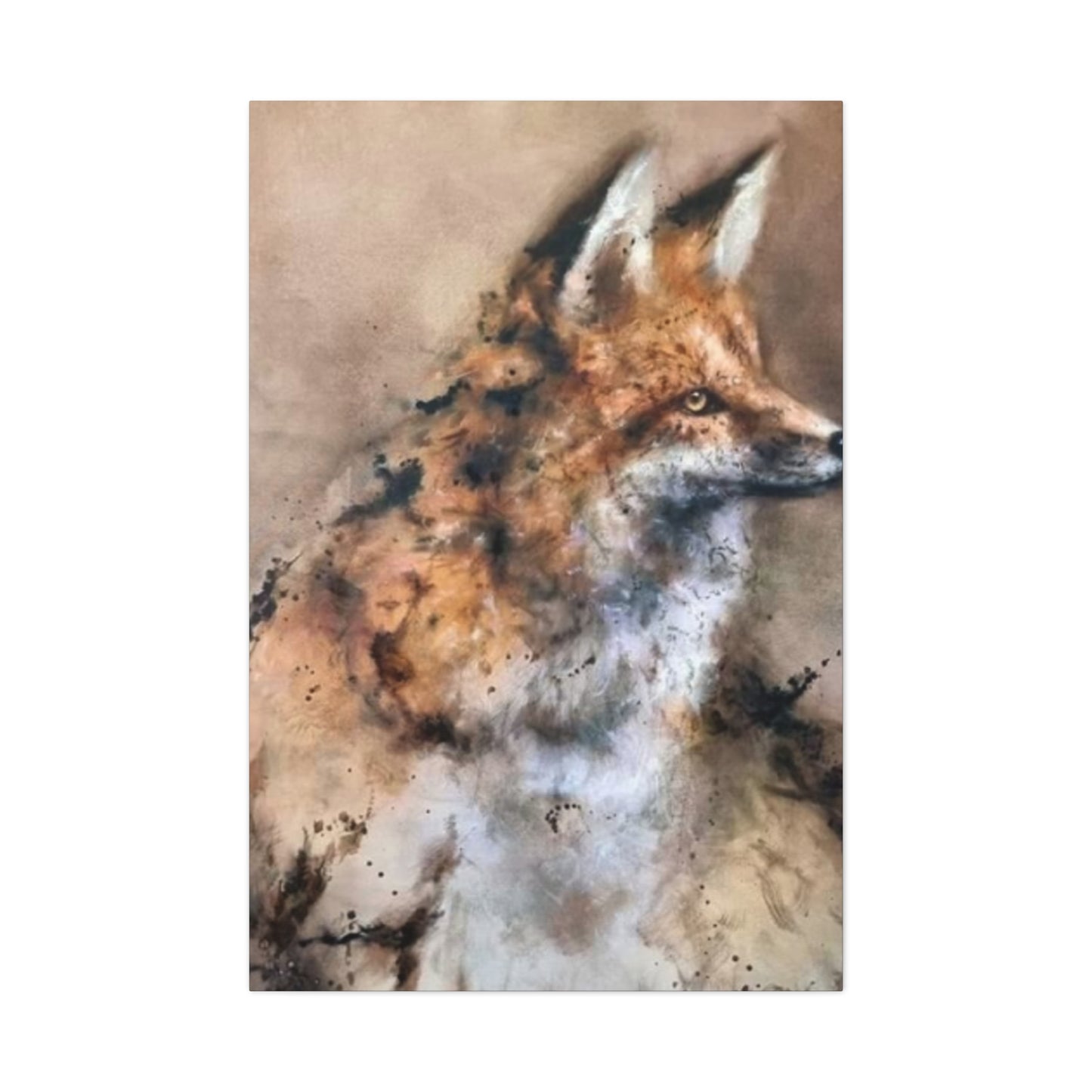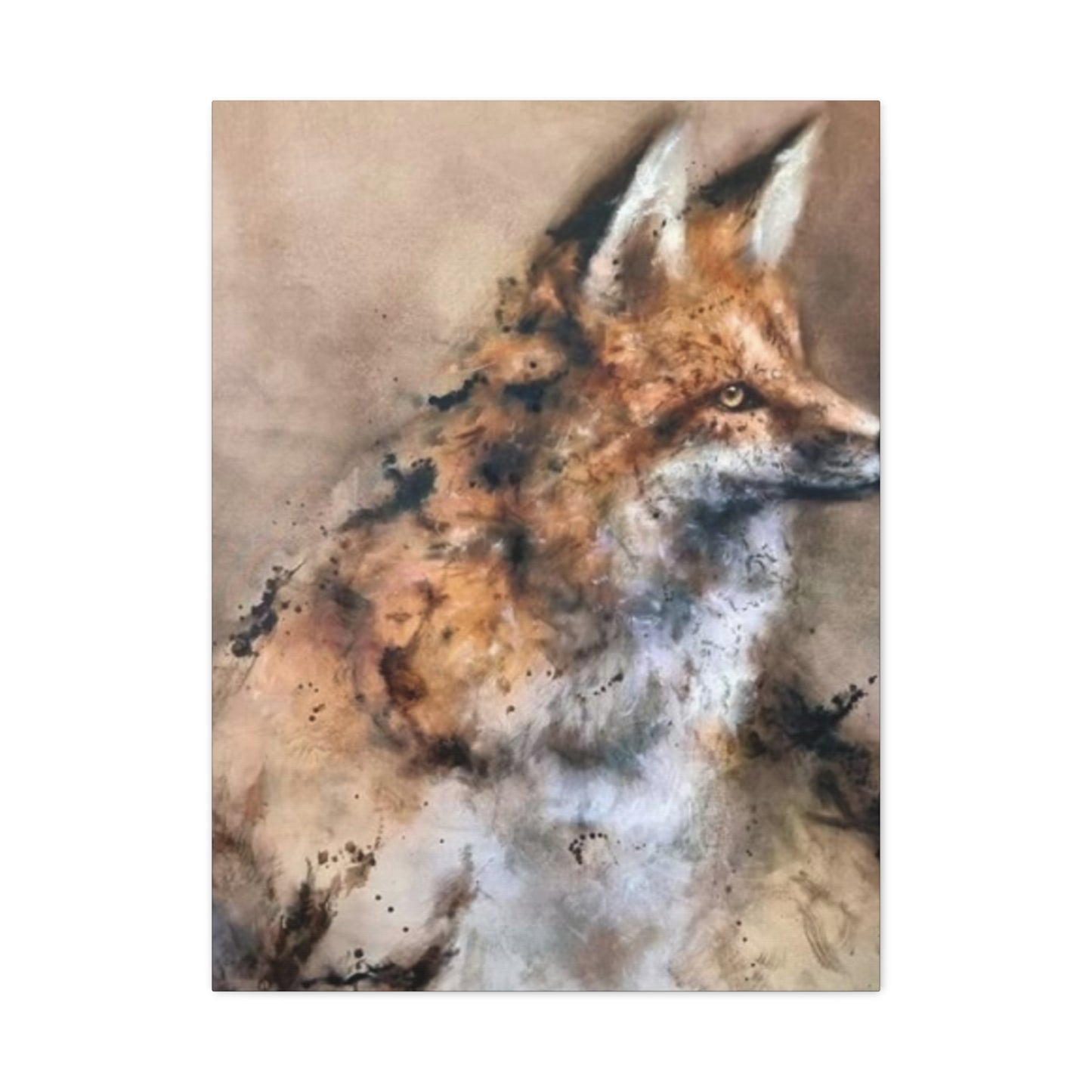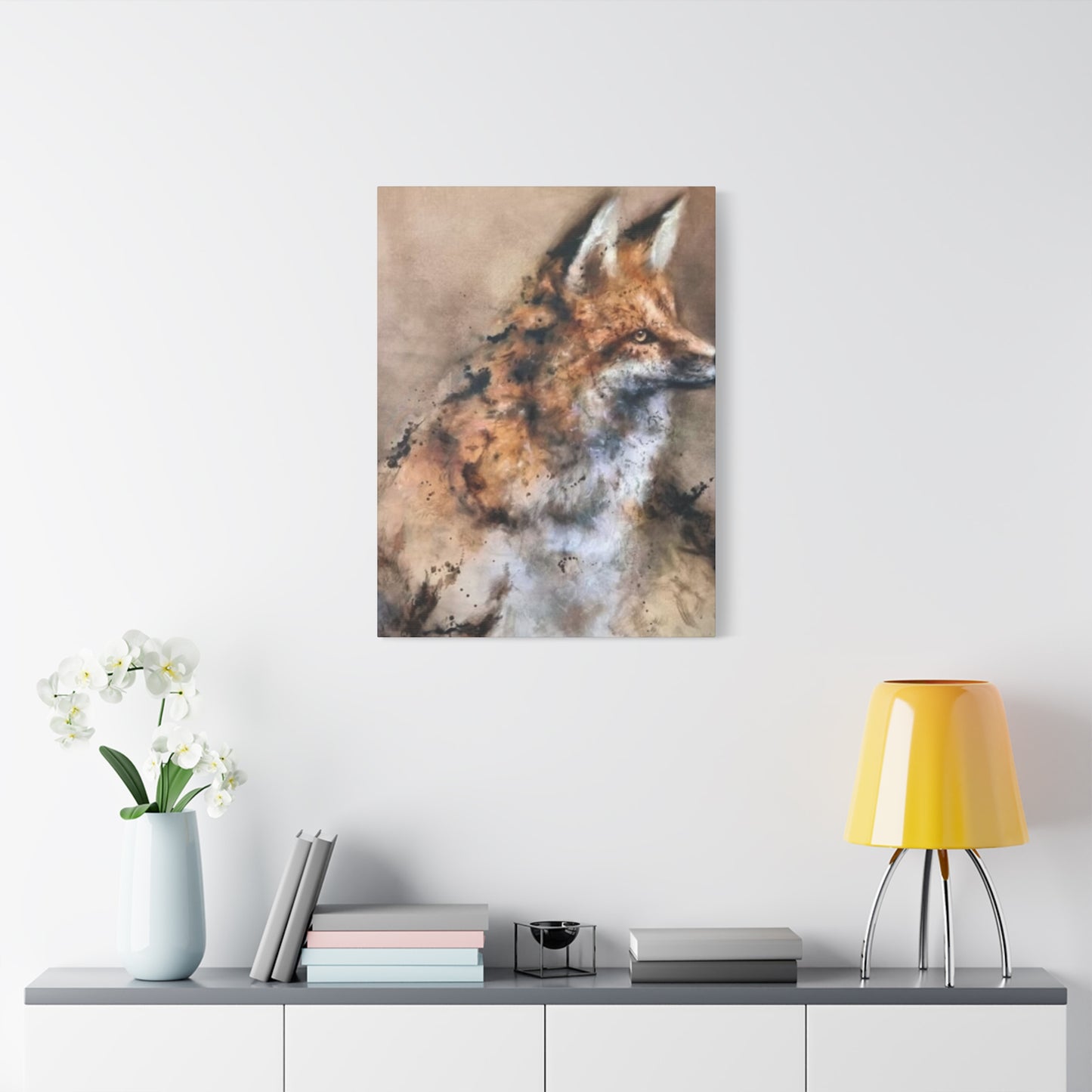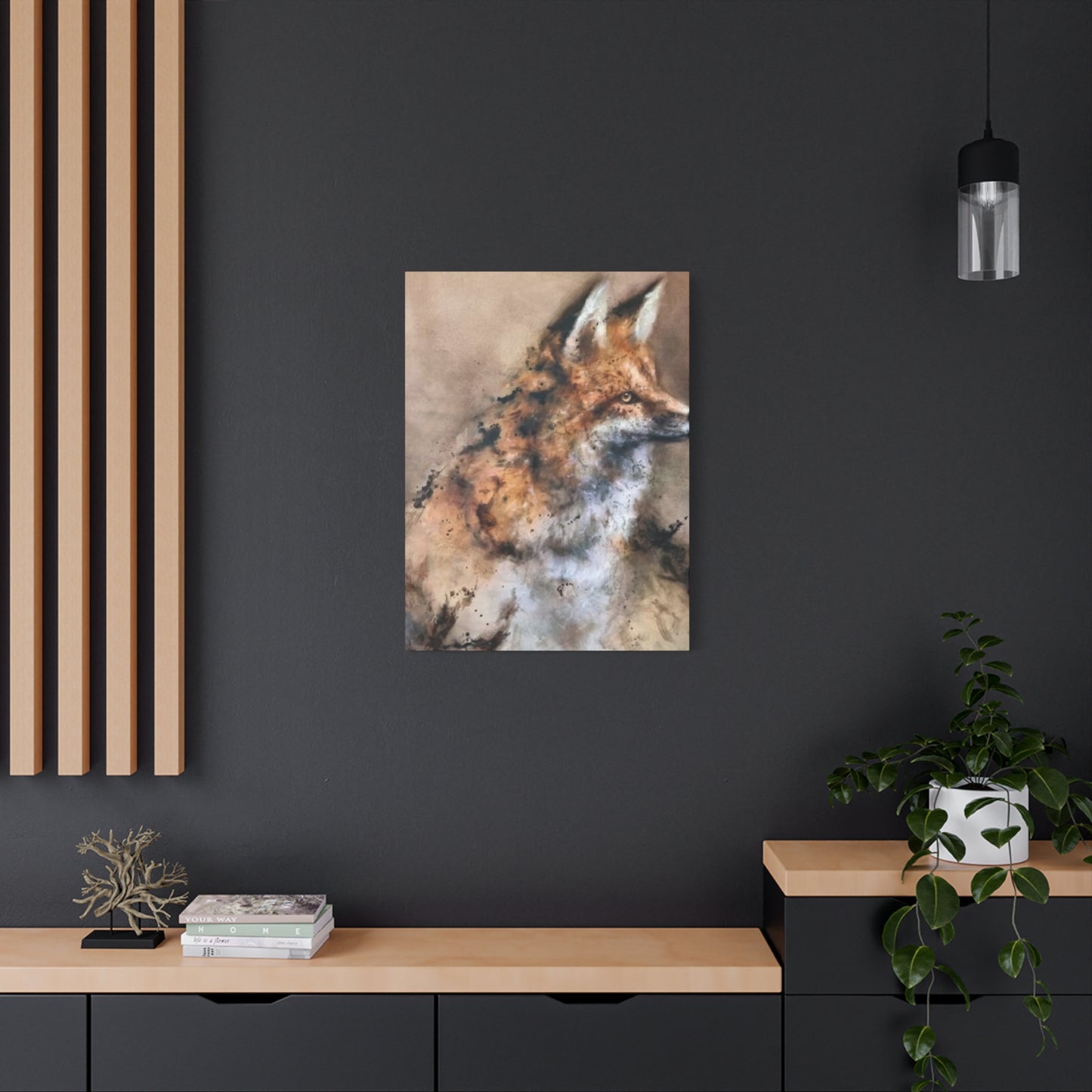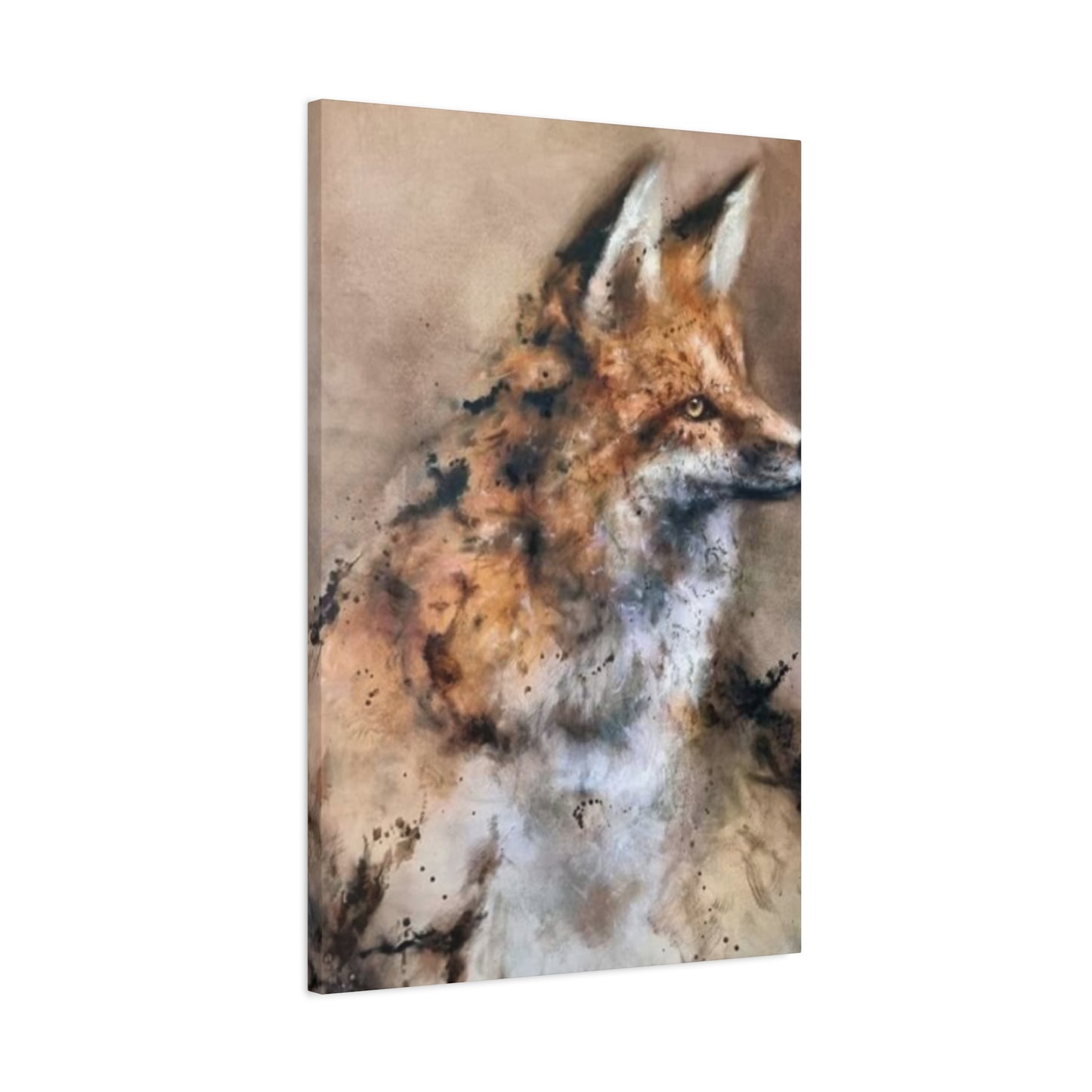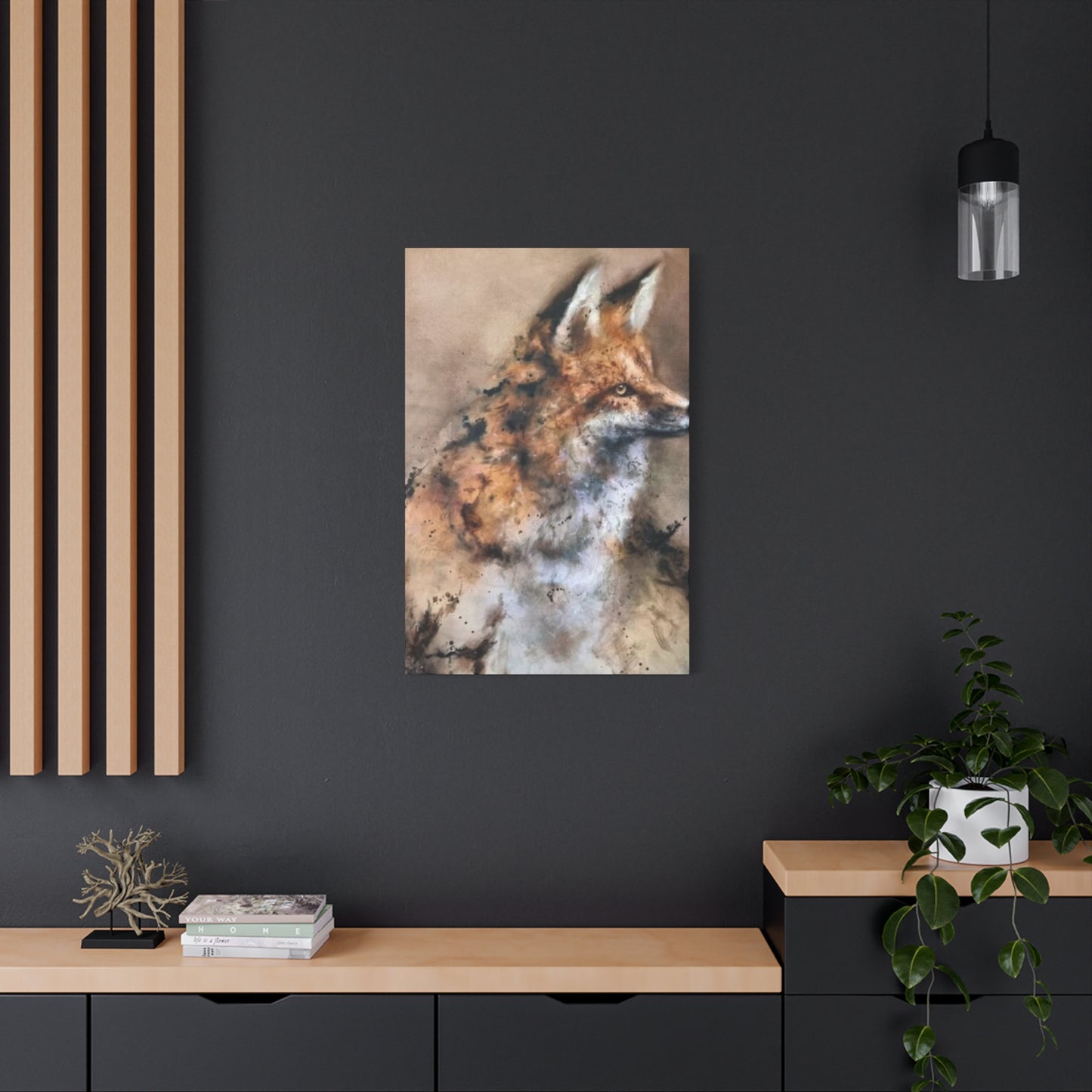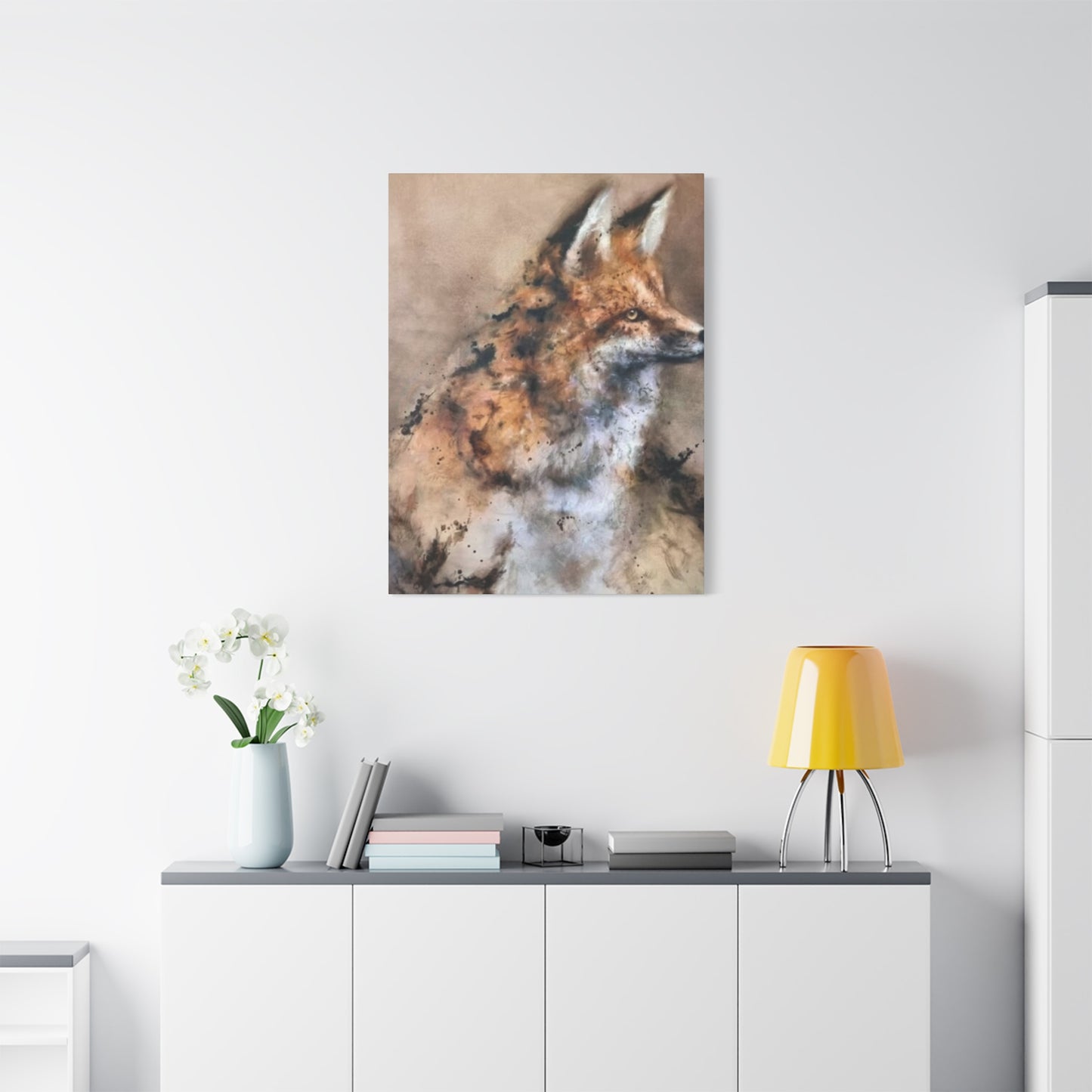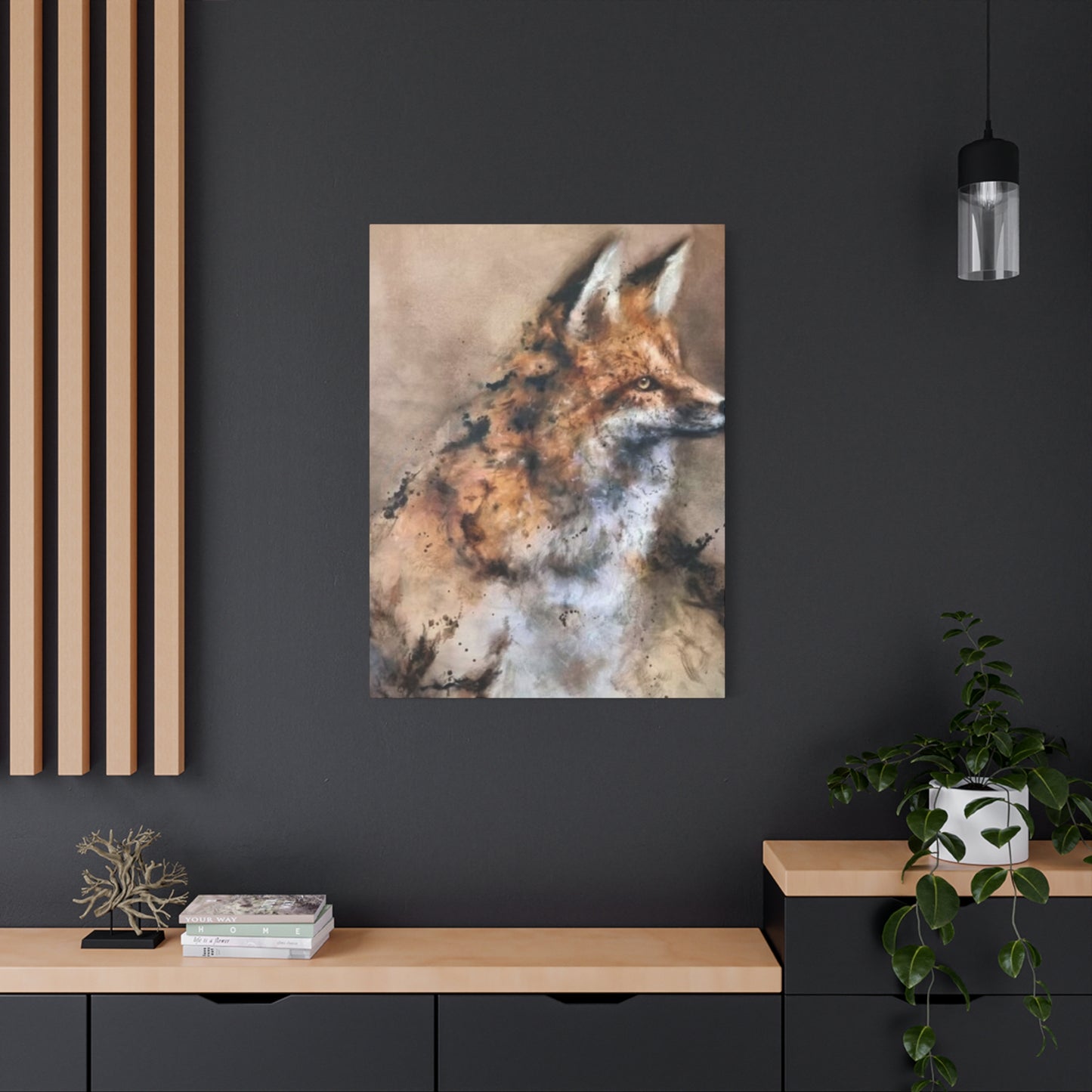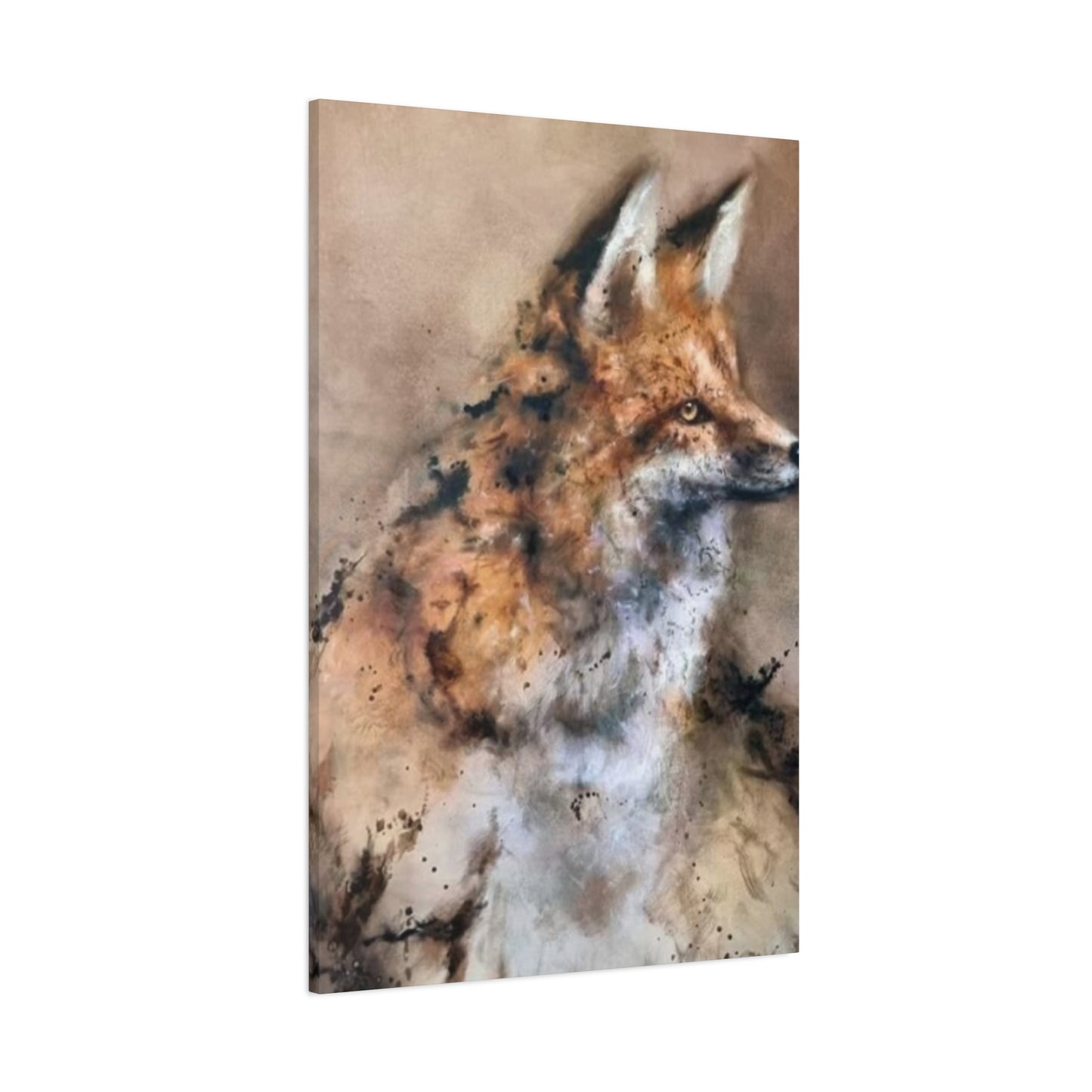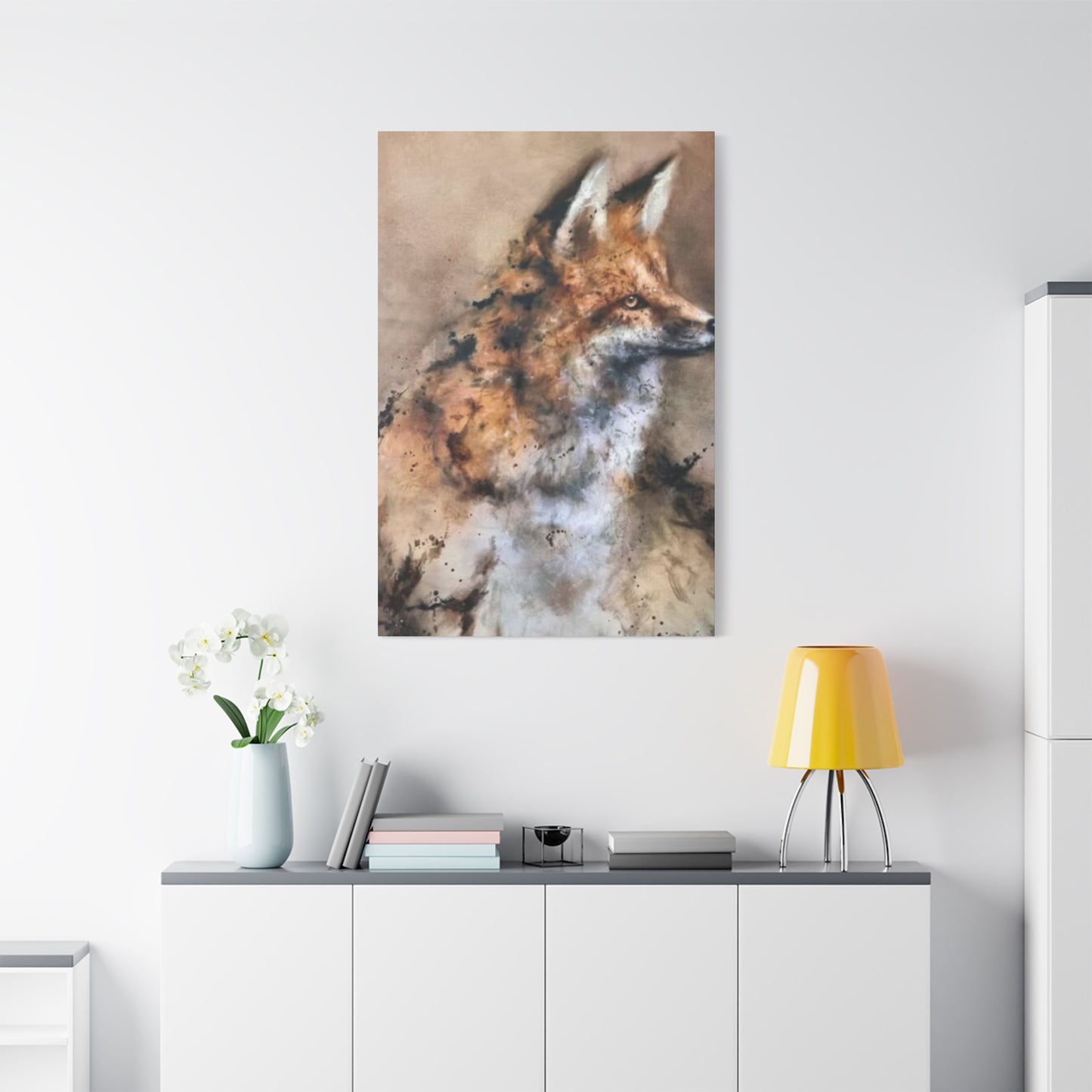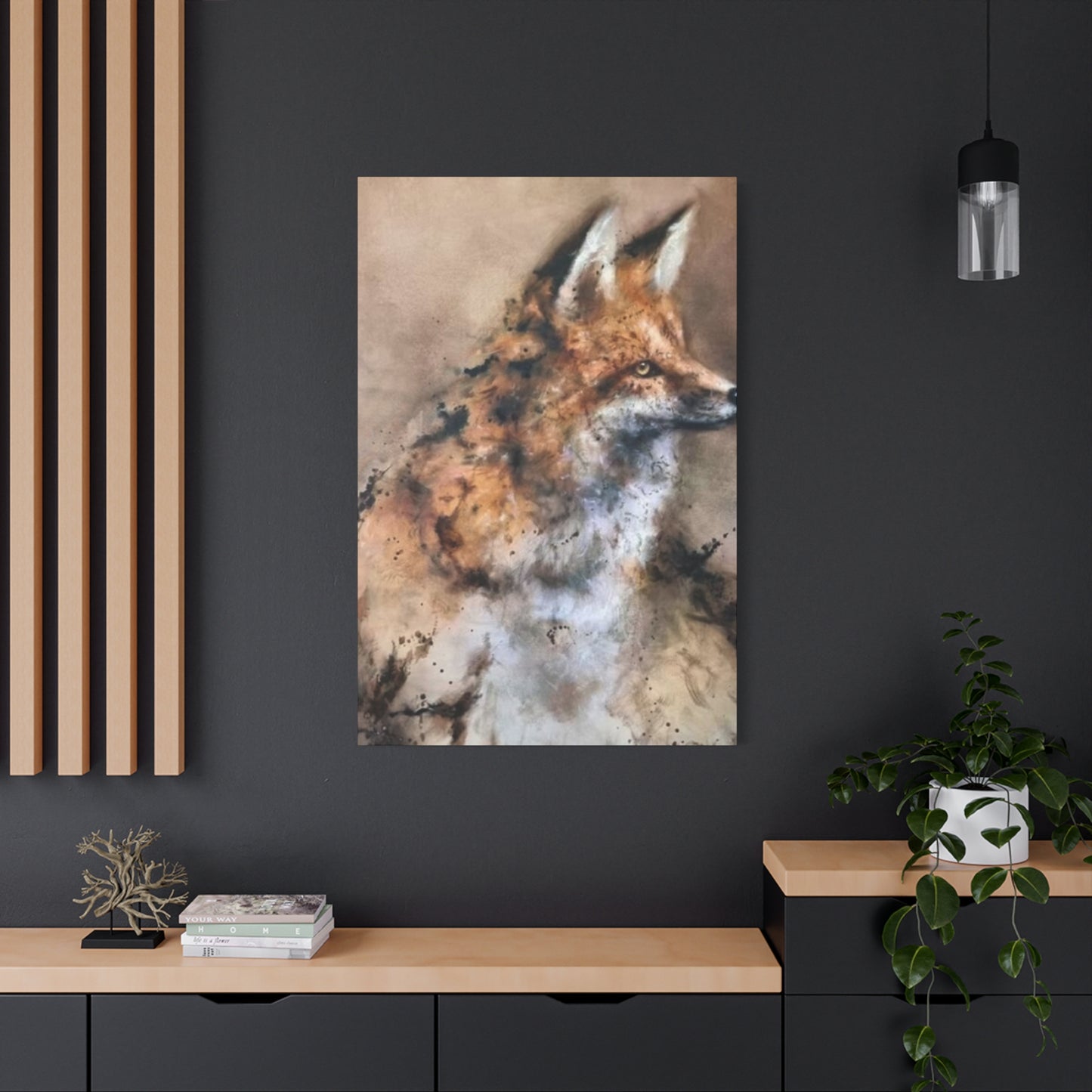Stunning Fox Abstract Wall Art: Contemporary Designs for Modern Interior Spaces
The world of interior decoration continues to evolve with fresh approaches to incorporating wildlife themes into contemporary living spaces. Among the most captivating trends emerging in recent years is the integration of fox-themed abstract artwork that brings both sophistication and natural beauty into homes, offices, and commercial environments. These artistic representations blend the mystique of one of nature's most cunning creatures with modern design principles, creating pieces that resonate with diverse aesthetic preferences while maintaining their appeal across various interior styles.
Fox abstract wall art represents more than just decorative elements; these pieces serve as focal points that can transform entire rooms, spark conversations, and reflect the personality of those who display them. The rising popularity of such artwork stems from its ability to bridge the gap between traditional wildlife art and contemporary abstract expressionism, offering viewers something familiar yet refreshingly innovative. Whether rendered in bold geometric patterns, flowing watercolor techniques, or minimalist line work, fox-themed abstract pieces continue to captivate collectors and casual decorators alike.
The appeal of incorporating fox imagery into abstract compositions lies in the animal's rich symbolic heritage across cultures. Representing intelligence, adaptability, and cunning throughout various mythologies and folklore traditions, the fox carries meanings that resonate with modern audiences seeking artwork that communicates deeper messages. When combined with abstract artistic techniques, these symbolic associations become layered with additional interpretation possibilities, allowing each viewer to form their own connection with the piece based on personal experiences and perspectives.
Contemporary artists working in this genre experiment with multiple approaches to depicting foxes through abstract lenses. Some focus on capturing the essence of the animal's movement and grace through dynamic brushstrokes and energetic compositions. Others deconstruct the fox's form into fundamental shapes and colors, creating puzzle-like arrangements that challenge viewers to recognize the subject through fragmented visual information. Still others employ negative space and minimalist approaches that suggest the fox's presence through careful placement of key identifying features against empty backgrounds.
The color palettes associated with fox abstract wall art span an impressive range, moving well beyond the typical russet and white combinations found in naturalistic representations. Artists frequently employ unexpected color schemes such as blues, purples, teals, and even neon hues to create striking visual impact while maintaining recognizable fox characteristics through form and composition. These bold color choices allow the artwork to complement modern interior design trends that favor accent colors and statement pieces capable of tying together various elements within a room.
Compositional Approaches in Abstract Fox Wall Art
Successful abstract fox artwork requires thoughtful compositional planning that balances representational elements with abstract qualities while creating visually engaging arrangements. Artists consider multiple compositional principles when developing their works, understanding that effective compositions guide viewer attention, create visual interest through variety, and establish satisfying balance that makes artwork pleasant to view over extended periods. The compositional choices made during the creative process significantly impact the final artwork's success in communicating ideas and maintaining viewer engagement.
Centralized compositions place the fox subject in the middle of the canvas or paper, creating formal, balanced arrangements that project stability and importance. This traditional approach focuses attention directly on the subject, making it the undeniable focal point. Artists must work carefully to prevent centralized compositions from appearing static by incorporating movement through the fox's pose, adding dynamic background elements, or using directional elements like gaze or gesture that create visual pathways extending beyond the central placement. Centralized fox abstracts work well in spaces where the artwork serves as a primary focal point, such as above sofas, beds, or in entrance halls.
Off-center placements utilizing the rule of thirds create more dynamic, contemporary compositions that feel less formal and more engaging. By positioning key elements along imaginary lines dividing the canvas into thirds both horizontally and vertically, artists create natural-looking arrangements that mirror how humans typically scan visual information. Placing the fox's eye or face at these intersection points creates strong focal areas while leaving space for additional compositional elements. Off-center compositions feel more modern and less constrained than traditional centered arrangements, appealing to contemporary aesthetic preferences.
Profile orientations showing the fox from the side allow artists to emphasize the animal's distinctive features like pointed snouts, alert ears, and bushy tails. Profile views create strong silhouettes easily recognized even when heavily abstracted, making them effective choices for pieces balancing representation and abstraction. The linear quality of profile orientations lends itself to both geometric and flowing abstract treatments. Artists can create visual movement by positioning profile views as if the fox is moving across the picture plane, with directional indicators suggesting motion.
Size Considerations and Display Options for Fox Abstract Art
Selecting appropriate sizes and display methods for fox abstract wall art significantly impacts its effectiveness in interior spaces. The relationship between artwork dimensions and room scale, viewing distances, and surrounding elements determines whether pieces integrate successfully into their environments or appear awkwardly proportioned. Understanding various size options and display configurations helps in making selections that enhance rather than detract from interior designs.
Small-format pieces measuring approximately eight by ten inches through sixteen by twenty inches serve multiple display purposes. These compact artworks work excellently as individual accent pieces in intimate spaces like bathrooms, home offices, or hallways where wall space is limited. Multiple small pieces can be arranged in gallery walls or grid configurations that create visual impact through accumulated effect rather than individual scale. Small formats also suit buyers with limited budgets or those wanting to collect multiple works by various artists. The intimate scale encourages close viewing and appreciation of detailed techniques that might go unnoticed on larger pieces.
Medium-scale artworks ranging from eighteen by twenty-four inches through thirty by forty inches represent versatile options suitable for most residential applications. These proportions work effectively above furniture pieces like sofas, beds, and consoles without overwhelming them. Medium formats provide sufficient presence to serve as focal points while remaining manageable in terms of cost, shipping, and handling. Artists working in medium formats can include substantial detail while maintaining overall compositional unity visible from typical viewing distances. These sizes accommodate most framing and hanging situations without requiring special hardware or installation considerations.
Large-format pieces exceeding forty inches in any dimension create dramatic impact appropriate for spacious interiors with high ceilings and ample wall space. These substantial artworks function as architectural elements that influence entire room atmospheres. Large formats allow for impressive gestural work and bold compositional choices that would lose impact when reduced to smaller scales. Viewers can appreciate both overall compositions from distance and move closer to examine surface details and techniques. Large artworks suit open-concept living areas, commercial lobbies, corporate offices, and hospitality environments where they establish presence and contribute to brand identity.
Oversized statement pieces measuring six feet or larger in one or both dimensions serve as central design elements around which entire rooms are organized. These monumental works require careful consideration of installation, as their weight and dimensions necessitate proper hanging systems and sometimes professional installation. Oversized fox abstracts work in generous spaces like double-height entry halls, expansive living rooms, hotel lobbies, and gallery environments where their scale can be properly appreciated. These pieces command substantial investment but provide unparalleled impact.
Square formats ranging from small twelve by twelve-inch pieces through large forty-eight by forty-eight-inch canvases offer balanced compositions without directional emphasis. Square artworks project stability and modernity, working particularly well in contemporary interiors. Multiple squares can be arranged in geometric configurations creating expanded visual statements. The format's equal proportions suit certain compositional approaches, particularly centralized and symmetrical designs.
Framing and Presentation Techniques for Contemporary Fox Art
Proper framing and presentation significantly enhance abstract fox wall art, protecting pieces while contributing to their visual impact and integration with interior designs. The relationship between artwork and frame should complement rather than compete, with framing choices supporting the art's aesthetic qualities while providing necessary physical protection. Understanding various framing approaches helps in selecting presentations that maximize each piece's effectiveness.
Traditional wooden frames in finishes like natural wood, painted colors, or stained tones offer classic presentations that work with multiple interior styles. Wood frames provide substantial physical presence that gives weight and importance to artworks. Natural wood tones create warm presentations that complement earth-tone fox abstracts and organic interior designs. Painted frames in black, white, or colors coordinate with artwork hues or interior palettes. The width of wooden frames affects visual impact, with narrow profiles maintaining focus on artwork while wider frames create more elaborate presentations.
Modern metal frames in aluminum, steel, or brass finishes provide sleek, contemporary presentations ideal for minimalist interiors and modern artworks. Thin metal profiles create refined borders that contain artwork without visual heaviness. Metal frames in metallic finishes add subtle luxury, while powder-coated colors provide coordinating options. The linear quality of metal framing complements geometric abstract fox pieces and works effectively with glass or acrylic glazing for clean, professional appearances.
Floating frame designs position artwork between front glazing and backing boards, creating shadows around all four edges that give the illusion of the art floating within the frame. This three-dimensional presentation adds depth and sophistication while clearly separating artwork from frames. Floating presentations work excellently with abstract pieces, emphasizing their status as art objects rather than mere wall decorations. The technique suits both traditional wooden and modern metal frame materials.
Gallery wrap presentation stretches canvas artworks around frame edges so painted surfaces continue to the sides, eliminating need for separate framing. This frameless approach creates clean, modern presentations that emphasize the artwork itself without surrounding borders. Gallery-wrapped canvases can hang directly on walls or be mounted in minimal floating frames for subtle enhancement. The technique works well with abstract pieces where compositions extend naturally to edges without important elements requiring protection behind glazing.
Creating Gallery Walls with Multiple Fox Abstract Pieces
Gallery wall arrangements combining multiple artworks create expanded visual statements that transform walls into curated displays. Successfully designing gallery walls requires understanding compositional principles that scale from individual artworks to overall arrangements, ensuring unified appearances despite multiple separate pieces. Fox abstract art lends itself particularly well to gallery wall treatments, allowing collectors to showcase varied interpretations and styles while maintaining thematic coherence.
Symmetrical grid arrangements position identically sized and framed artworks in evenly spaced rows and columns, creating orderly, formal presentations. Grid galleries project organization and intentionality, working well in modern interiors where clean lines and geometric arrangements predominate. These layouts work effectively with series of related fox abstracts created as cohesive sets. Consistent spacing between frames creates uniform gaps that contribute to the grid's geometric impact. Symmetrical arrangements suit spaces where formality and order align with desired atmospheres.
Asymmetrical salon-style arrangements combine varied artwork sizes, orientations, and frame styles in organic compositions that feel collected and personal. Salon walls require careful planning to achieve balanced appearances despite unequal elements. Starting with a central anchor piece and building outward helps establish arrangements. Maintaining relatively consistent spacing between all frames creates visual connections that unify disparate elements. Salon galleries work excellently for displaying collected artworks acquired over time, celebrating variety while maintaining cohesion through subject matter. These arrangements suit eclectic, traditional, and transitional interiors where personality and collected character are valued over formal minimalism.
Linear horizontal arrangements position multiple artworks in single rows spanning wall lengths, creating horizontal emphasis ideal for long wall sections above sofas, in hallways, or dining rooms. Pieces may be identically sized for uniform rhythm or varied for dynamic interest. Consistent alignment along top or bottom edges creates implied lines that unify arrangements. Horizontal galleries elongate spaces visually while providing substantial artwork presence without vertical bulk.
Vertical stacked arrangements position artworks in single columns, emphasizing height and suiting narrow wall sections beside doorways or between windows. Vertically stacked galleries draw eyes upward, making ceiling heights more prominent. These arrangements work with graduated sizing, largest at bottom transitioning to smallest at top, or uniform sizing throughout. Vertical galleries suit contemporary interiors and spaces where horizontal wall space is limited.
Selecting Fox Abstract Art for Different Interior Design Styles
Successfully integrating fox abstract wall art into interior spaces requires understanding how artwork relates to broader design styles and aesthetic principles governing room designs. Different interior design approaches establish distinct visual languages through their color palettes, material choices, furniture styles, and decorative philosophies. Selecting fox abstracts that harmonize with these stylistic frameworks ensures artwork enhances rather than conflicts with overall design intentions.
Modern interior design characterized by clean lines, minimal ornamentation, neutral color palettes, and emphasis on function pairs excellently with geometric and minimalist fox abstracts. Artwork for modern spaces should feature crisp edges, limited color palettes, and compositions emphasizing form over decoration. Black and white fox abstracts or pieces using single bold colors work particularly well, as do geometric deconstructions that reduce the fox form to essential shapes. Frames should be simple metal or thin wood profiles that disappear rather than compete for attention. The artwork should feel like intentional design elements rather than decorative afterthoughts.
Contemporary interiors incorporating current trends, mixed materials, and artistic experimentation accommodate diverse fox abstract styles. Contemporary design's eclectic nature allows for bold color choices, varied techniques, and expressive approaches. Fox abstracts featuring unexpected colors, mixed media techniques, or innovative compositional approaches thrive in contemporary settings. Frameless presentations, floating frames, or distinctive frame choices complement the style's willingness to embrace newness and reject rigid rules. Contemporary spaces welcome conversation-starting artwork that reflects current artistic movements.
Scandinavian design emphasizing simplicity, functionality, natural materials, and connection to nature creates ideal contexts for fox abstract art with organic qualities. Artwork featuring natural color palettes, particularly white, gray, pale blues, and earth tones, harmonizes with Scandinavian interiors. Fox abstracts rendered in watercolor or with soft, flowing forms complement the style's gentle aesthetic. The symbolic connection between foxes and Nordic nature resonates with Scandinavian design philosophy. Simple wooden frames in light natural finishes coordinate with the blonde woods typical of Scandinavian furniture.
Industrial interiors featuring exposed architectural elements, metal and concrete materials, and utilitarian aesthetics benefit from fox abstracts with edgy, contemporary qualities. Artwork incorporating bold contrasts, gritty textures, and unconventional colors complements industrial spaces' raw character. Oversized pieces that treat walls as expansive canvases suit the generous wall spaces often found in converted industrial buildings. Metal frames or frameless presentations coordinate with industrial material palettes. Fox abstracts with urban, graphic qualities bridge the gap between nature themes and industrial aesthetics.
Bohemian interiors celebrating pattern, color, global influences, and collected character welcome fox abstracts with rich colors, elaborate details, and artistic expressiveness. Layered, complex compositions with multiple colors and techniques fit bohemian's more-is-more philosophy. Fox abstracts can mix with diverse other artworks in eclectic gallery walls that celebrate variety. Ornate frames in carved wood or decorated finishes complement bohemian's appreciation for craft and detail. The mystical associations of foxes resonate with bohemian spirituality.
Placement Strategies for Maximum Visual Impact
Strategic placement of fox abstract wall art within interior spaces significantly influences its effectiveness and the overall atmosphere of rooms. Understanding principles of visual hierarchy, sightlines, lighting relationships, and spatial proportion enables optimal positioning that maximizes artwork's impact while supporting functional room usage. Thoughtful placement transforms artwork from mere decoration into integral design components that enhance daily living experiences.
Eye-level hanging represents the fundamental principle guiding artwork placement, positioning pieces so their centers align approximately fifty-seven to sixty inches from floor level. This standard height reflects average human eye level and creates comfortable viewing experiences where observers naturally engage with artwork without straining upward or downward. In rooms where people primarily sit, slightly lower placement accommodates reduced sightlines. In galleries or hallways where standing viewing predominates, standard eye-level placement works optimally. Consistent hanging heights throughout connected spaces create visual flow and professional appearances.
Above-furniture placement requires careful consideration of relationships between artwork and the furniture pieces it surmounts. Fox abstracts hanging above sofas, beds, consoles, or sideboards should maintain proportional relationships to furniture widths, generally spanning two-thirds to three-quarters of the furniture piece's width. Vertical spacing between furniture tops and artwork bottoms typically ranges from six to twelve inches, providing visual connection while preventing pieces from appearing cramped together. Artwork centered over furniture creates formal, balanced arrangements, while off-center placement generates contemporary asymmetry.
Focal wall designation concentrates attention on single walls within rooms, using artwork as the primary visual draw that establishes room character. Fox abstract art selected as focal wall centerpieces should command presence through size, color intensity, or compositional drama. Focal walls typically face main entrances or viewing positions like sofas, ensuring artwork receives maximum visibility. Supporting design elements like accent wall colors, special lighting, or minimal furniture placement enhance focal wall effectiveness. Avoiding competing visual elements on other walls maintains focal emphasis.
Corner placement positions artwork in room corners where walls meet, utilizing often-overlooked spaces while creating interesting viewing angles. Fox abstracts in corners receive light from multiple directions and are visible from varied positions throughout rooms. Corner placement works particularly well with square or smaller artworks that fit comfortably within corner dimensions without overwhelming the space. This strategy helps activate entire rooms rather than concentrating all visual interest along single walls.
Hallway installation transforms transitional spaces into gallery experiences, using fox abstracts to enliven areas often treated as purely functional. Long hallway walls accommodate multiple artworks in linear arrangements or single statement pieces that draw people forward. Lighting in hallways requires special consideration, as these spaces often lack natural light and need adequate artificial illumination to showcase artwork effectively. Hallway placement ensures artwork receives regular viewing as inhabitants move through homes, maximizing exposure and appreciation.
Stairwell positioning utilizes vertical wall spaces alongside stairs, creating gallery progressions that unfold as people ascend or descend. Artwork placement along stairwells requires attention to staggered sightlines, with pieces positioned to maintain visibility from multiple stair levels. The ascending arrangement allows for creating visual narratives or progressions through related artworks. Stairwell installations transform purely functional architecture into engaging spatial experiences.
Dining room placement positions fox abstracts where they contribute to meal atmosphere while remaining visible during gatherings. Artwork behind dining tables or on walls visible from table seating creates pleasant views during meals. Pieces should enhance rather than dominate, supporting conversation and dining rather than demanding constant attention. Colors and subjects that remain appealing while eating should guide selections, avoiding potentially unappetizing imagery or jarring color combinations.
Bedroom placement requires considering viewing from both standing positions and bed, as artwork becomes visible during rest and sleep preparation. Fox abstracts above beds serve as focal points when entering rooms and provide views from bed positions. Pieces should promote restfulness through calming colors and compositions rather than overly stimulating arrangements. Artwork visible from bed should feel personally meaningful, as these private spaces reflect individual taste more than public areas.
Office installation in home workspaces or professional environments positions fox abstracts where they provide visual breaks from computer screens and work materials while maintaining professional appropriateness. Artwork behind desks creates pleasant views for video calls and visitors, while pieces on walls facing desks offer focal points for visual rest during work. Selections should inspire without distracting, supporting productivity through their presence.
Bathroom placement brings artwork into utilitarian spaces, elevating them beyond pure function. Fox abstracts in bathrooms must withstand humidity and temperature fluctuations, requiring appropriate framing protection. Smaller pieces suit bathroom scales, and subjects should maintain appeal in intimate grooming contexts. Bathroom artwork opportunities often go unexplored, but thoughtful selections make these daily-use spaces more pleasant.
Lighting Considerations for Showcasing Fox Abstract Artwork
Proper lighting dramatically affects how fox abstract wall art appears, influencing color perception, texture visibility, and overall impact. Understanding various lighting approaches and their effects enables creating optimal viewing conditions that reveal artwork's full qualities while protecting pieces from light-induced damage. Strategic lighting transforms adequate artwork display into outstanding presentation that maximizes aesthetic and emotional impact.
Natural daylight provides full-spectrum illumination that reveals colors and details most accurately but varies throughout days and seasons, creating inconsistent viewing experiences. Northern exposure windows offer relatively stable indirect light without harsh direct sun, making them favorable for artwork placement. Eastern and western exposures provide morning or afternoon direct light that can cause glare and heat damage, requiring window treatments to moderate intensity. Southern exposures receive strongest sun in northern hemisphere locations, necessitating protective measures. UV-filtering window films, curtains, or blinds protect artwork from fading while permitting natural light enjoyment. Positioning artwork perpendicular to windows rather than opposite them minimizes glare.
Picture lights mounted directly on frames or walls above artwork provide focused illumination specifically highlighting pieces. Traditional picture lights extend horizontally across frame tops, casting light downward across artwork surfaces. These fixtures create gallery-quality presentation while operating independently from room lighting, allowing artwork illumination even when ambient light is low. LED picture lights offer energy efficiency and low heat output that prevents artwork damage. Adjustable picture lights accommodate various artwork sizes and allow precise light direction. Finishes should coordinate with frames and interior hardware.
Track lighting systems with adjustable fixtures enable directing multiple light sources toward artwork and repositioning as needs change. Track systems suit spaces displaying multiple artworks or rooms where furniture arrangements shift. Individual track heads can highlight separate pieces or combine to illuminate larger works. Using dimmers with track lighting permits adjusting intensity for different times and occasions. The visible tracks and fixtures contribute to room aesthetics, working best in contemporary or industrial interiors where exposed systems complement design styles.
Recessed ceiling spotlights provide concealed illumination that highlights artwork without visible fixtures competing for attention. Recessed lights create clean, minimalist presentations ideal for modern interiors. Directional adjustable recessed fixtures allow angling light toward specific artworks rather than illuminating only areas directly below. Spacing and positioning recessed lights requires planning during construction or renovation. Dimming capabilities add flexibility for varied lighting scenes.
Wall-mounted adjustable sconces positioned flanking artwork provide balanced illumination from both sides, reducing shadows and ensuring even light distribution. Paired sconces create symmetrical presentations suited to formal or traditional interiors while providing functional lighting. Adjustable arms or heads allow directing light precisely toward artwork. Sconces combine ambient room lighting with artwork highlighting, serving dual purposes. Styles range from traditional candelabra forms through contemporary geometric designs.
Floor lamps with adjustable heads offer flexible artwork lighting that relocates easily as arrangements change. Positioning floor lamps slightly forward of artwork and angling heads toward pieces creates effective uplighting or side lighting depending on lamp height. This portable solution suits renters or those frequently rearranging spaces. Floor lamps combine artwork illumination with ambient room lighting and reading light functionality.
LED strip lighting mounted behind artwork frames creates halo effects that outline pieces with soft glows, adding drama particularly effective with contemporary pieces. LED strips attach to frame backs or wall surfaces, requiring minimal space and producing negligible heat. Color-changing LED strips enable altering lighting moods, though neutral whites best serve artwork viewing. The indirect lighting creates sophisticated ambiance while drawing attention to artwork locations.
Museum-quality lighting systems employ specialized fixtures and techniques used in professional galleries, providing optimal color rendering and intensity control. These professional solutions include high color rendering index bulbs that accurately display artwork colors without color casts. Precise optics control beam spreads to match artwork dimensions without light spill. Professional systems represent substantial investments justified for valuable collections. Consulting with lighting designers ensures optimal specifications.
Lighting temperature selection between warm, neutral, and cool white tones affects color perception and atmosphere. Warm lighting around two thousand seven hundred Kelvin creates cozy, intimate feelings but may shift color appearance toward yellow-orange. Neutral white around three thousand to four thousand Kelvin provides balanced illumination approximating daylight without extreme warmth or coolness. Cool white above five thousand Kelvin creates bright, energetic environments but may appear harsh or clinical. Selecting temperatures complementing both artwork and desired room atmosphere ensures cohesive results.
Light intensity adjustment through dimmers allows varying illumination levels for different occasions and times. Bright lighting facilitates detailed artwork examination and creates energetic daytime atmospheres. Lower lighting creates intimate evening moods while reducing eye strain. Variable intensity extends bulb life and reduces energy consumption. Smart lighting systems enable scheduling automatic adjustments throughout days, maintaining optimal conditions without manual intervention.
Creating Commissioned Custom Fox Abstract Artwork
Commissioning custom fox abstract artwork allows obtaining pieces perfectly tailored to specific spaces, color schemes, and personal preferences. The commissioning process involves collaborating with artists to develop unique works matching individual requirements while respecting artistic vision. Understanding commissioning procedures, effective communication strategies, and reasonable expectations ensures satisfying experiences resulting in meaningful artworks.
Artist research and selection begins the commissioning process, requiring identifying artists whose existing work demonstrates styles, techniques, and quality levels aligning with desired outcomes. Online portfolios, gallery exhibitions, art fairs, and social media platforms provide opportunities to discover artists working in abstract fox themes. Reviewing multiple examples of each artist's work reveals consistency, range, and whether their aesthetic sensibilities match personal preferences. Considering artist experience levels affects both pricing and process smoothness, with established artists typically commanding higher commissions but offering proven reliability.
Initial consultation establishes project parameters through discussions about intentions, preferences, and practical requirements. Communicating desired sizes, orientations, and color palette preferences provides essential information guiding artistic development. Sharing photographs of intended display spaces helps artists understand environmental contexts influencing color and style choices. Discussing budget ranges early prevents investing time in concepts financially unattainable. Establishing timelines including creation duration and any deadlines ensures schedule alignment. Honest communication about expectations and concerns during initial consultations prevents misunderstandings later.
Concept development involves artists creating preliminary sketches, digital mockups, or color studies showing proposed approaches before beginning final works. These preliminary materials allow commissioners to provide feedback and request adjustments while changes remain relatively simple to implement. Reviewing concepts carefully and providing clear, specific feedback about elements that work or require modification guides artists toward satisfying outcomes. Maintaining realistic expectations about how much deviation from artists' established styles is reasonable prevents requesting fundamental changes to their artistic voices.
Contract agreements formalize commission arrangements, protecting both artists and commissioners through documented terms. Written contracts should specify agreed dimensions, materials, color palettes, completion timelines, payment schedules, and revision policies. Addressing copyright ownership, reproduction rights, and usage permissions prevents future disputes. Deposit requirements typically range from thirty to fifty percent of total commission costs, with remaining balance due upon completion and approval. Cancellation policies protecting both parties should be clearly stated. Having written agreements prevents memory conflicts about verbal discussions.
Progress updates during creation keep commissioners informed without excessively interrupting artistic processes. Many artists provide periodic photographs showing work at various stages, allowing commissioners to observe development and raise concerns before completion. Establishing update frequencies during initial consultations sets appropriate expectations. Trusting artists' processes while remaining engaged ensures positive collaborative experiences. Resisting urges to micromanage allows artists to work effectively while feedback opportunities exist at reasonable intervals.
Revision discussions address any elements commissioners want adjusted before considering works complete. Most commission agreements include limited revision rounds, typically one or two opportunities for requesting modifications. Feedback should focus on objective elements like specific color adjustments or compositional changes rather than vague dissatisfaction. Understanding that fundamental concept changes may require additional fees maintains fairness. Approaching revisions collaboratively rather than critically supports positive artist relationships.
Completion approval marks projects' conclusions, occurring when commissioners accept finished works as fulfilling agreements. Final evaluation should consider works in intended display contexts, as lighting and surrounding elements affect appearances. Paying remaining balances promptly upon approval maintains professional relationships and artistic community goodwill. Providing testimonials or reviews helps artists attract future commissions. Many commissioner-artist relationships continue beyond individual projects, with satisfied commissioners returning for additional works.
Pricing considerations for commissioned artwork account for artist experience, reputation, material costs, time investment, and market positioning. Emerging artists may charge hundreds of dollars for medium-sized works, while established artists command thousands or tens of thousands for similar dimensions. Complex techniques, premium materials, and larger formats increase costs. Geographic locations affect pricing, with artists in major metropolitan areas typically charging more than those in smaller markets. Comparing commission quotes from multiple artists provides market context, though lowest prices don't guarantee best value.
Shipping and installation planning ensures safe artwork delivery and proper hanging. Discussing shipping arrangements during commissioning prevents surprises about packaging and delivery costs. Professional shipping services specializing in artwork provide secure transportation with insurance coverage. Unframed canvases ship more economically than framed pieces but require local framing. Installation may necessitate professional services for large or heavy works. Planning these logistics prevents artworks sitting unhung after arrival.
Long-term relationships with artists develop through successful commissions, creating opportunities for building collections with stylistic consistency. Returning to same artists for multiple commissions often results in pricing considerations and prioritized scheduling. Artists appreciate loyal clients and may create series specifically matching existing owned pieces. Collecting multiple works by individual artists creates cohesive personal collections with investment potential.
Caring for and Maintaining Fox Abstract Wall Art
Proper care and maintenance preserve fox abstract artwork's beauty and value over years and decades, protecting investments while ensuring continued enjoyment. Different artwork types require specific care approaches based on their materials, techniques, and framing methods. Understanding preservation principles and implementing protective practices prevent deterioration and damage that diminish artwork quality.
Dust accumulation on artwork surfaces and frames gradually dulls appearances and can abrade surfaces if particles are ground into materials during cleaning attempts. Regular gentle dusting using soft, clean, lint-free cloths or microfiber dusters removes particles before they accumulate significantly. Dusting should proceed with light touches that lift dust rather than pushing it across surfaces. For framed works behind glazing, cleaning glass or acrylic with appropriate cleaners maintains clarity, spraying cleaners on cloths rather than directly on glazing prevents solution from seeping behind frames. Unglazed canvases require extra care, with very soft brushes or compressed air removing dust without surface contact.
Light exposure gradually fades pigments in all artwork, with some materials particularly vulnerable to light-induced degradation. Ultraviolet radiation proves especially damaging, causing colors to shift and paper to yellow and become brittle. Positioning artwork away from direct sunlight prevents accelerated fading, while UV-filtering glazing or window films reduce damage from ambient and indirect light. LED lighting produces minimal UV radiation compared to incandescent or fluorescent sources, making it preferable for artwork illumination. Rotating displayed artworks periodically distributes light exposure across collections rather than concentrating it on constantly displayed pieces.
Temperature and humidity fluctuations stress artwork materials, causing expansion and contraction that can crack paint, warp supports, and separate layers. Maintaining stable environmental conditions between sixty-five and seventy-five degrees Fahrenheit and forty to fifty-five percent relative humidity provides optimal preservation. Avoiding placement near heating vents, air conditioning units, fireplaces, or exterior walls with poor insulation prevents exposure to extreme conditions. In climates with high humidity, dehumidifiers protect against mold growth and moisture damage. In arid climates, humidifiers prevent excessive dryness causing brittleness.
Handling artwork requires clean hands and careful support to prevent damage from oils, dirt, and physical stress. Washing and drying hands before touching art removes contaminants that can transfer to surfaces. Holding framed pieces by frames rather than glazing avoids fingerprints on viewing surfaces. For unframed canvases, supporting pieces by edges and structural elements rather than painted surfaces prevents pressure damage. Using both hands to support larger pieces distributes weight and prevents bending. Never touching painted surfaces directly maintains surface integrity.
Professional cleaning services provide expertise for artwork requiring more than routine dusting. Trained conservators assess artworks' conditions and employ appropriate techniques and materials for safe cleaning without damaging original materials. Professional intervention proves particularly important for valuable works or pieces showing signs of deterioration. Annual or biannual professional evaluations catch emerging problems before they become serious. Attempting complex cleaning without expertise risks irreversible damage, making professional services worthwhile investments.
Understanding Artistic Movements Influencing Contemporary Fox Art
Contemporary fox abstract wall art exists within broader art historical contexts, drawing influences from multiple artistic movements that developed throughout the twentieth and twenty-first centuries. Understanding these foundational movements provides appreciation for the techniques, philosophies, and aesthetic choices visible in modern fox abstracts, revealing how current artists build upon and respond to their artistic inheritances.
Abstract Expressionism emerging in the nineteen forties emphasized spontaneous, emotional expression through non-representational forms, liberating art from realistic depiction requirements. Pioneers like Jackson Pollock, Mark Rothko, and Willem de Kooning explored paint as expressive medium rather than merely descriptive tool. Contemporary fox abstracts employing gestural brushwork, drip techniques, and emotional color fields descend from Abstract Expressionist innovations. The movement's emphasis on individual expression and subjective experience continues influencing artists who use fox imagery as starting points for explorations transcending literal representation.
Color Field Painting developing from Abstract Expressionism featured large areas of flat color creating atmospheric, meditative works. Artists like Rothko, Helen Frankenthaler, and Morris Louis explored color relationships and emotional effects of expansive hues. Contemporary fox abstracts using minimal compositions with large color zones and subtle variations reflect Color Field influence. This approach's contemplative qualities appeal to creators and viewers seeking art promoting reflection rather than immediate impact.
Pop Art emerging in the nineteen fifties challenged distinctions between fine art and popular culture, incorporating commercial imagery and techniques. While seemingly distant from abstract wildlife art, Pop Art's graphic sensibilities, bold colors, and flattened forms influence contemporary fox abstracts with poster-like qualities. Artists combining fox imagery with bright, saturated colors and simplified forms show Pop Art's lasting impact on accessible, visually immediate artwork.
Minimalism arising in the nineteen sixties emphasized simplicity, essential forms, and reduction to fundamental elements. Minimalist principles appear in fox abstracts using limited palettes, simple compositions, generous negative space, and refined execution. This movement's less-is-more philosophy influences artists creating contemplative pieces communicating through subtlety rather than complexity. Minimalist fox abstracts appeal to audiences seeking sophistication and restraint.
Geometric Abstraction with roots in early twentieth-century movements like Cubism and Constructivism emphasizes shapes, lines, and mathematical precision. Contemporary fox abstracts deconstructing animal forms into triangles, circles, and polygons demonstrate geometric influences. This approach bridges organic subject matter and rational, ordered design systems. The intellectual qualities of geometric abstraction attract artists and viewers appreciating analytical approaches to image making.
Expressionism predating Abstract Expressionism emphasized emotional intensity and subjective perspectives over objective representation. German Expressionists like Franz Marc created wildlife paintings using unnaturalistic colors and distorted forms expressing inner feelings. Contemporary fox abstracts with intense colors and emotionally charged compositions continue Expressionist traditions of art as emotional communication rather than visual documentation.
Fauvism's early twentieth-century experiments with unnatural, intensely saturated colors liberated artists from realistic color representation. Fauvist principles appear in fox abstracts using blues, purples, pinks, and other unexpected hues. This movement demonstrated that emotional and aesthetic color choices could supersede naturalistic observation, permission contemporary artists continue exercising.
Street Art and Graffiti influences appear in fox abstracts incorporating urban aesthetics, spray paint effects, stenciled forms, and graphic lettering. These vernacular art forms' energy, immediacy, and accessibility influence artists bringing street sensibilities into fine art contexts. Fox abstracts with urban edges appeal to audiences appreciating art connected to contemporary visual culture beyond traditional fine art frameworks.
Digital Art movements emerging with computer technology enable new creative possibilities impossible in traditional media. Digital tools allow precise color control, mathematical pattern generation, and manipulation capacities expanding creative options. Contemporary fox abstracts created digitally or combining digital and traditional techniques demonstrate technology's expanding role in artistic creation.
Contemporary Realism's revival in recent decades sees some artists returning to careful observation and skilled representation while incorporating modern sensibilities. This movement influences fox abstracts maintaining more representational qualities while incorporating abstract elements. The tension between representation and abstraction creates dynamic works appealing to audiences appreciating both traditional skill and contemporary innovation.
Cultural Symbolism of Foxes Across Different Traditions
Foxes carry rich symbolic meanings across diverse cultural traditions worldwide, with these accumulated associations informing contemporary interpretations of fox abstract wall art. Understanding cultural symbolism provides deeper appreciation for why fox imagery resonates so powerfully and how different traditions influence artistic representations. These layered meanings allow viewers from various backgrounds to find personal significance in fox-themed artwork.
Japanese culture features foxes prominently through kitsune mythology presenting supernatural fox spirits possessing intelligence, magical abilities, and centuries-long lifespans. Kitsune can shape-shift into human form, with benevolent types serving as messengers for Inari, the Shinto rice deity. These positive associations make foxes symbols of prosperity, protection, and spiritual connection in Japanese tradition. Contemporary fox abstracts drawing on Japanese aesthetic principles may incorporate these symbolic dimensions, creating works carrying cultural weight beyond mere animal depiction.
European folklore traditions present more ambivalent fox symbolism, with clever trickster characters appearing in Aesop's fables and medieval tales. Reynard the Fox exemplifies cunning that outsmarts other animals and occasionally human authorities. European traditions sometimes cast foxes as untrustworthy or deceitful while simultaneously admiring their intelligence. This cultural ambivalence creates complex symbolic terrain where foxes represent both admired cleverness and concerning duplicity. Contemporary European artists may engage these conflicted traditions through abstract works allowing multiple interpretive possibilities.
Native American traditions feature coyotes and foxes as trickster figures in creation stories and teaching tales. These characters use cunning to overcome challenges but sometimes face consequences from their schemes. The trickster serves important cultural functions teaching lessons while entertaining. Fox and coyote symbolism emphasizes intelligence, adaptability, and the importance of wit in survival. Contemporary artists with Native American heritage or influences may draw on these rich traditions in their abstract fox works.
Chinese culture associates foxes with supernatural abilities and longevity, similar to Japanese kitsune beliefs. Fox spirits in Chinese folklore can be benevolent or malicious, often testing humans' character. The complexity of Chinese fox symbolism recognizes nature's dual aspects and spiritual world's mysteries. Contemporary Chinese artists may incorporate traditional symbolic elements into modern abstract fox pieces bridging cultural heritage and contemporary expression.
Celtic traditions featured foxes in tales emphasizing cleverness and ability to escape dangerous situations. The animals appeared in heraldry and decorative arts representing wisdom and cunning. Celtic knotwork and design principles sometimes incorporated fox imagery, a tradition continuing in contemporary Celtic-inspired fox abstracts combining ancient design sensibilities with modern techniques.
African traditions vary across the continent's diverse cultures, with foxes appearing in creation myths and moral tales. In some traditions, foxes mediate between spiritual and physical worlds or serve as messengers. The symbolic meanings emphasize communication, mediation, and boundary crossing. Contemporary African artists incorporating fox imagery may draw on these traditional associations while employing abstract visual languages.
Korean folklore includes fox spirits that gain supernatural powers through long life and spiritual cultivation. These kumiho possess both dangerous and potentially helpful aspects, depending on individual character and circumstances. The ambiguous nature of Korean fox symbolism creates rich interpretive possibilities for contemporary artists exploring cultural heritage through abstract means.
The Rise of Wildlife Themes in Modern Interior Design
Wildlife imagery including fox abstract wall art has surged in popularity within contemporary interior design, reflecting broader cultural trends emphasizing nature connection, environmental awareness, and biophilic design principles. Understanding this phenomenon's drivers provides context for fox abstract art's current appeal and suggests why such pieces likely maintain relevance moving forward. The integration of wildlife themes represents more than passing fashion, connecting to fundamental human needs and contemporary concerns.
Biophilic design principles recognize human innate affinity for nature and other living systems, incorporating natural elements into built environments to enhance wellbeing. Research demonstrates that nature imagery reduces stress, improves cognitive function, and increases satisfaction with environments. Wildlife art including fox abstracts brings natural world representation into homes and workplaces, potentially providing these psychological benefits. The movement toward biophilic design across architecture and interior design professions ensures continued demand for nature-themed artwork.
Urbanization's acceleration concentrates human populations in cities increasingly separated from natural environments. This physical distance from nature creates psychological hunger for natural connection, which wildlife art partially satisfies. Fox imagery becomes particularly relevant as foxes themselves adapt to urban environments, symbolizing nature's persistence despite human development. Abstract presentations allow contemporary urbanites to incorporate nature themes while maintaining modern aesthetic preferences rejecting literal or sentimental naturalism.
Environmental consciousness growing in response to climate change and biodiversity loss increases appreciation for wildlife and desire to celebrate nature's beauty while it remains. Displaying wildlife art becomes statement of values and commitment to environmental preservation. Fox abstracts allow expressing these values through sophisticated artwork avoiding didactic messaging. The emotional connection to wildlife potentially motivates conservation support and lifestyle changes benefiting environmental health.
Social media influence through platforms like Instagram and Pinterest spreads interior design trends rapidly, with wildlife themes gaining visibility through viral sharing. Hashtags like wildlifeart and animalprint expose millions to nature-themed interior possibilities. Fox abstracts' photogenic qualities make them particularly shareable, contributing to their popularity. Digital connectivity enables trends to spread globally, creating international markets for wildlife-themed artwork.
Wellness culture emphasizing holistic health recognizes environment's impact on physical and mental wellbeing. Creating healing, restorative home environments becomes priority, with nature themes contributing to these goals. Fox abstracts selected for calming colors and compositions support wellness objectives. The art-as-therapy movement positions artwork selection as self-care practice, increasing intentionality about displayed images' psychological impacts.
Artisan and handmade appreciation in reaction against mass production values unique, handcrafted objects including original artwork. Wildlife themes connect to this authenticity seeking through their natural subject matter. Commissioning custom fox abstracts or purchasing from independent artists aligns with values supporting creative communities and individual craftsmanship. This preference for authentic over manufactured extends to preferring original or limited-edition artwork over mass-produced prints.
Digital Art and the Future of Fox Abstract Wall Art
Digital technologies fundamentally transform artistic creation, distribution, and consumption, with significant implications for fox abstract wall art's future development. Understanding digital art's current state and emerging possibilities provides insight into how this genre may evolve. Digital innovations expand creative possibilities while creating new challenges regarding authenticity, value, and appreciation. The intersection of traditional artistic concerns with technological capabilities generates exciting frontier for artistic exploration.
Digital creation tools including graphic tablets, styluses, and sophisticated software enable artists to create fox abstracts entirely within digital environments. These tools offer advantages including infinite undoing capabilities, non-destructive editing through layers, and perfect color precision. Digital brushes simulate traditional media while offering impossible physical tools. Artists can experiment freely without material costs or waste. Finished digital works can be printed at various sizes without quality loss, providing flexibility traditional media cannot match. However, digital creation requires substantial equipment investment and technical learning curves potentially intimidating to traditionally trained artists.
NFT technology introduces blockchain-based ownership verification for digital artwork, addressing long-standing digital art problems around uniqueness and value. Non-fungible tokens create verifiable scarcity for digital fox abstracts existing as computer files. This technological development enables digital artists to sell original works rather than merely unlimited copies. NFT marketplaces create new distribution channels bypassing traditional galleries. However, environmental concerns about blockchain energy consumption, market speculation volatility, and accessibility barriers create controversies. NFTs' long-term impact on digital art markets remains uncertain despite current enthusiasm.
Conclusion
In conclusion, Stunning Fox Abstract Wall Art offers a captivating way to incorporate nature and contemporary design into your modern interior spaces. The fox, with its graceful yet elusive presence, serves as a perfect subject for abstract art, allowing for a dynamic interpretation that blends sharp lines, fluid shapes, and bold colors. This type of wall art strikes a balance between the wild beauty of the animal and the clean, sophisticated lines of modern décor, making it an ideal choice for those seeking a unique focal point that’s both artistic and meaningful.
Abstract fox art is especially effective in contemporary interiors because it adds a layer of depth and visual intrigue without overwhelming the space. The abstract nature of the design allows for personal interpretation, inviting the viewer to connect with the artwork in a deeper, more intuitive way. The use of vibrant hues and geometric patterns can bring energy to a room, while softer, muted tones can create a calming and serene atmosphere. Whether in a living room, bedroom, or hallway, this type of wall art effortlessly enhances the ambiance of any room, creating a stylish environment that celebrates both art and nature.
Incorporating Stunning Fox Abstract Wall Art into your home is a way to introduce an element of nature while maintaining a sleek, contemporary aesthetic. The fox, often associated with intelligence, agility, and adaptability, symbolizes qualities that resonate with many people. Displaying this art can evoke a sense of curiosity, mystery, and freedom, while simultaneously adding an element of sophisticated charm to your décor.
Ultimately, abstract fox wall art is an exceptional way to elevate your modern space with a unique blend of creativity and nature. It’s not just a decorative piece but a statement of style and personality, offering an artistic interpretation of one of nature’s most intriguing creatures. Whether you prefer vibrant and bold or soft and minimalistic, Stunning Fox Abstract Wall Art is a versatile and striking addition to any modern interior, helping to create a space that’s both visually engaging and emotionally inspiring.

















